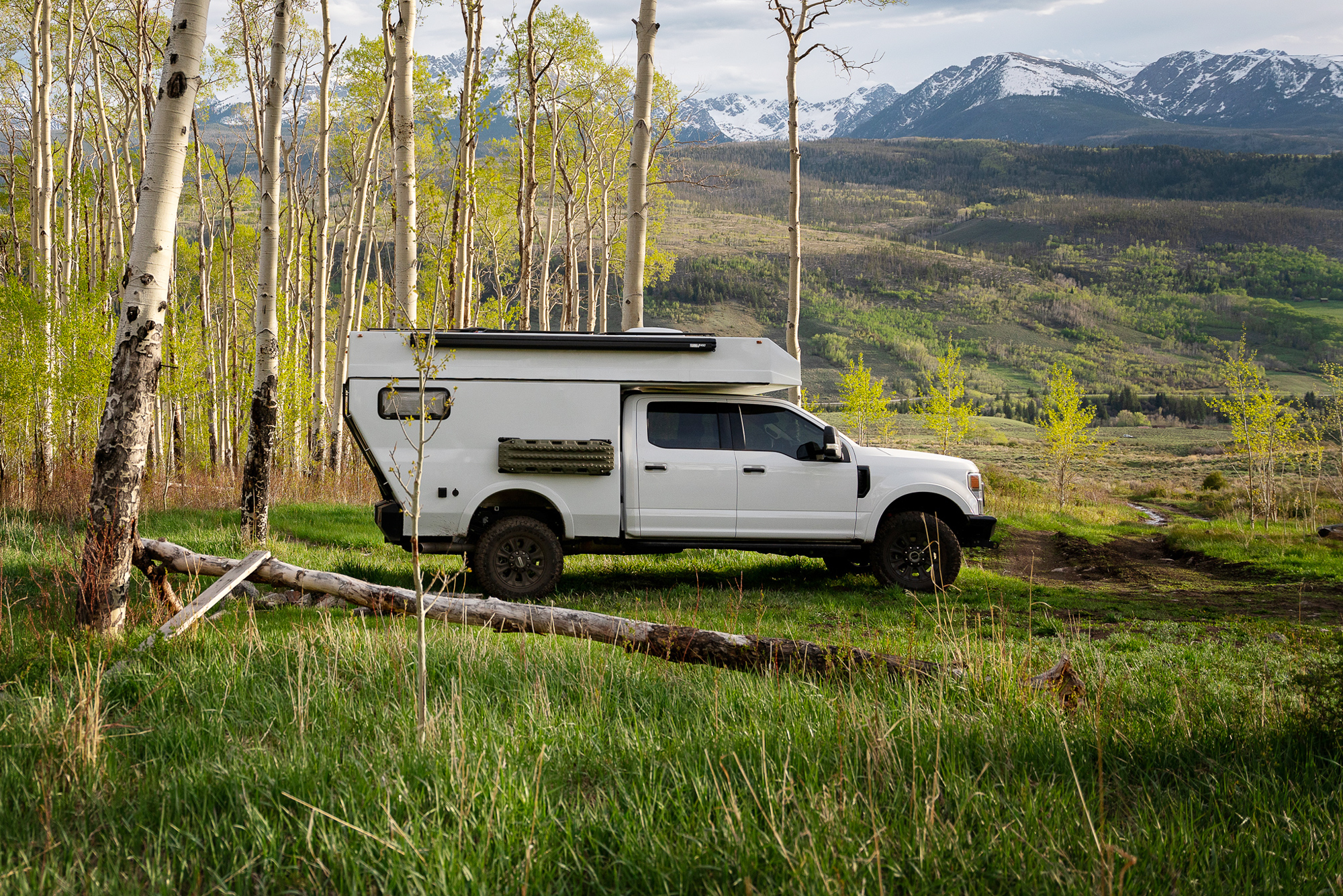The Rossmönster Baja Adventure Truck
When the Rossmönster team reached out and asked if I was interested in taking their newest overlanding vehicle, the Baja adventure truck, out for a spin, I was giddy with excitement. This would be the first flatbed truck and camper combo that I’d ever driven. To say that I was eager to get behind the wheel and pilot this beautiful beast through the Colorado mountains would be an understatement.
My trip began in late May, with a visit to the Rossmönster shop where I received a thorough vehicle orientation from Ross and his wife, Lucy, before they handed me the keys. Upon initial inspection, the controls for all of the vehicle’s systems felt intuitive, perhaps a result of my experience with campers and RVs. Nonetheless, I was thankful that the Baja came with a manual explaining how to operate everything from the roof-lifting actuators to the induction cooktop. The manual also had a trouble-shooting section in case any unexpected hiccups interrupted my trip.
After securing an excessive amount of camera and camping equipment in the Baja, I proceeded to pull out of the parking lot and onto the road, headed west towards the snowcapped peaks of the Front Range and beyond.
The Route: Approximately 450 miles total, including highway, mountain roads, and Forest Service trails in Central Colorado
When I take a vehicle out for a hands-on test, I come up with a general route to follow, mostly to ensure a variety of driving conditions but also for good photo opportunities. But given that it wasn’t even June, picking a route through the Colorado high country that would deliver beautiful vistas, as well as trails that weren’t snow-packed, was going to be challenging.

The final route ended up being approximately 450 miles long and included a handful of Forest Service roads that aren’t pictured on the map above.
My drive started in Longmont, Colorado, briefly passing through Boulder and the foothills before heading west on Interstate 70, the main artery that cuts through the middle of the state. I drove through the Eisenhower Tunnel (running under the Continental Divide at an average elevation of 11,112 feet), continuing through Summit County and arriving late at night near the town of Wolcott, my first campsite of the trip.
This first section of the drive covered roughly 140 miles of highway and mountain driving, with some county roads thrown in for good measure. Overall, my experience behind the wheel of the Baja was positive. Acceleration was reduced due to the weight of the camper and all of my equipment, but the F-250 was still more than capable of propelling me down the road comfortably at speeds of 75+ mph.
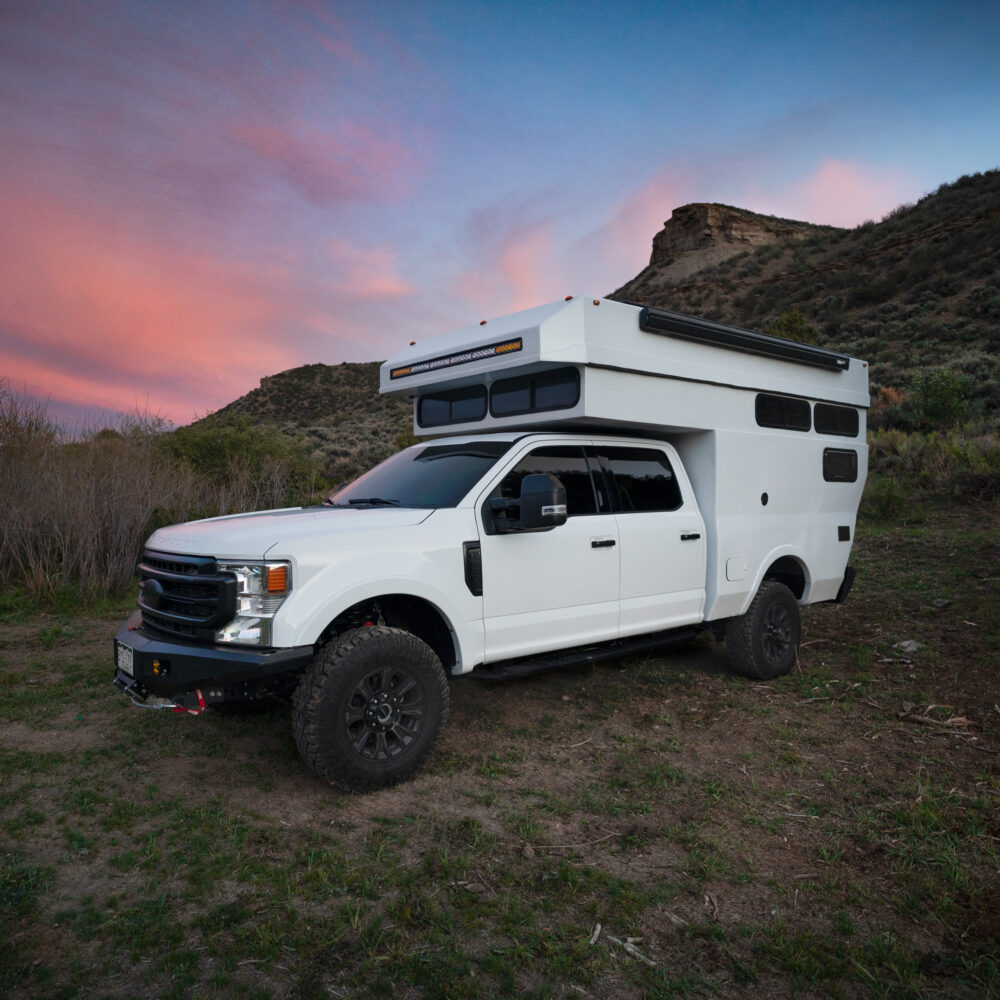
“We know that many people, including ourselves, prefer to adventure in hard-to-reach places where getting there is part of the experience. As such, we wanted to build a vehicle with the same craftsmanship and dedication to design that we’ve been employing in our van builds for years, but with a bit more capability to explore where others can’t.” –Ross Williamson, owner of Rossmönster Vans and mastermind behind the Baja.
The Baja’s handling on the pavement was satisfactory, even at highway speeds, and I was pleasantly surprised when I didn’t experience any unwanted wobbles, sway, or excessive body-roll while cornering. Because the Baja is more top-heavy than an empty pickup truck, it is advantageous to adhere to posted truck speed limits and turn speed recommendations.
The following morning I woke up at sunrise for a quick hike and fly paragliding mission with some local pilots on nearby Yarmony Mountain before packing up the Baja and continuing my drive.
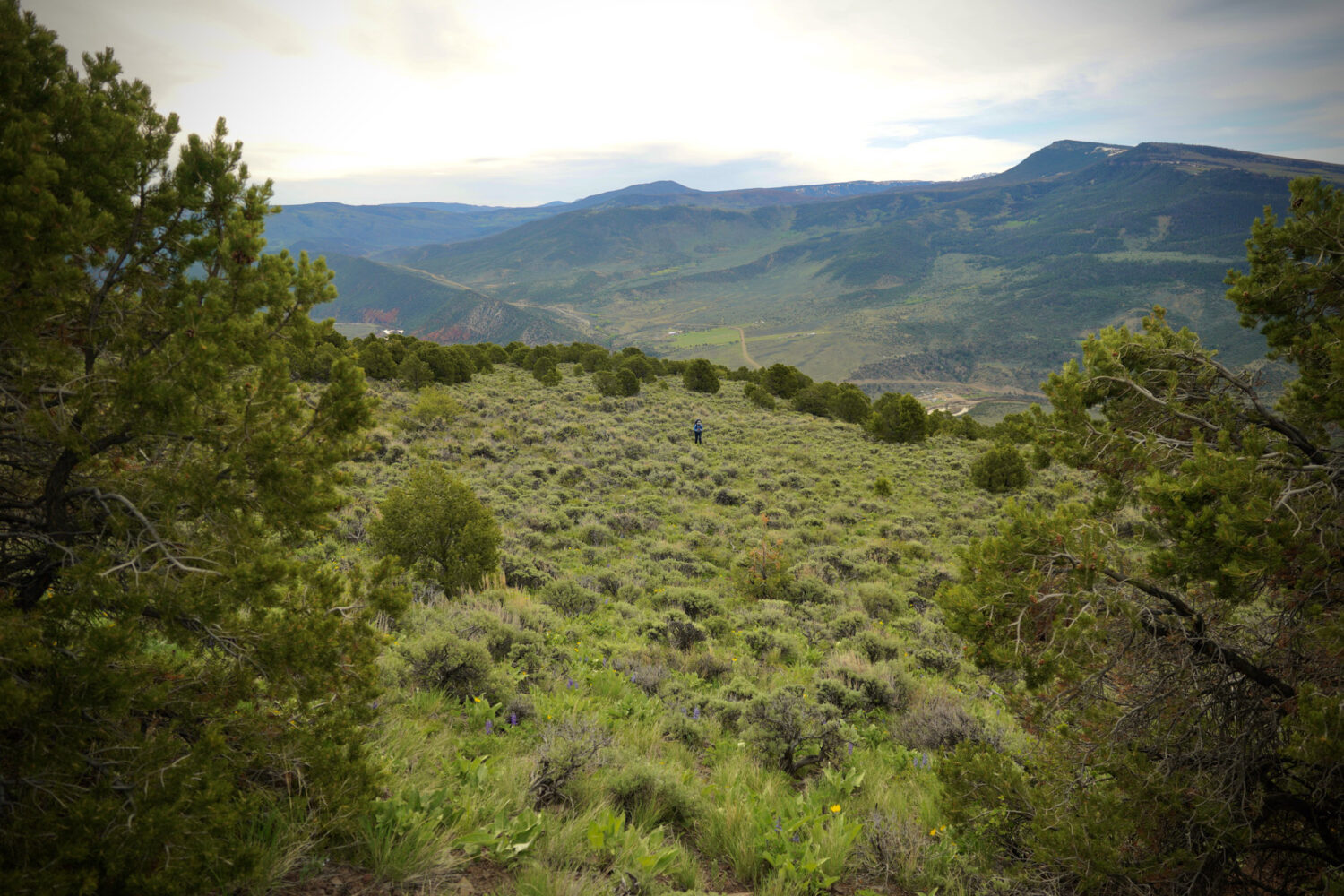

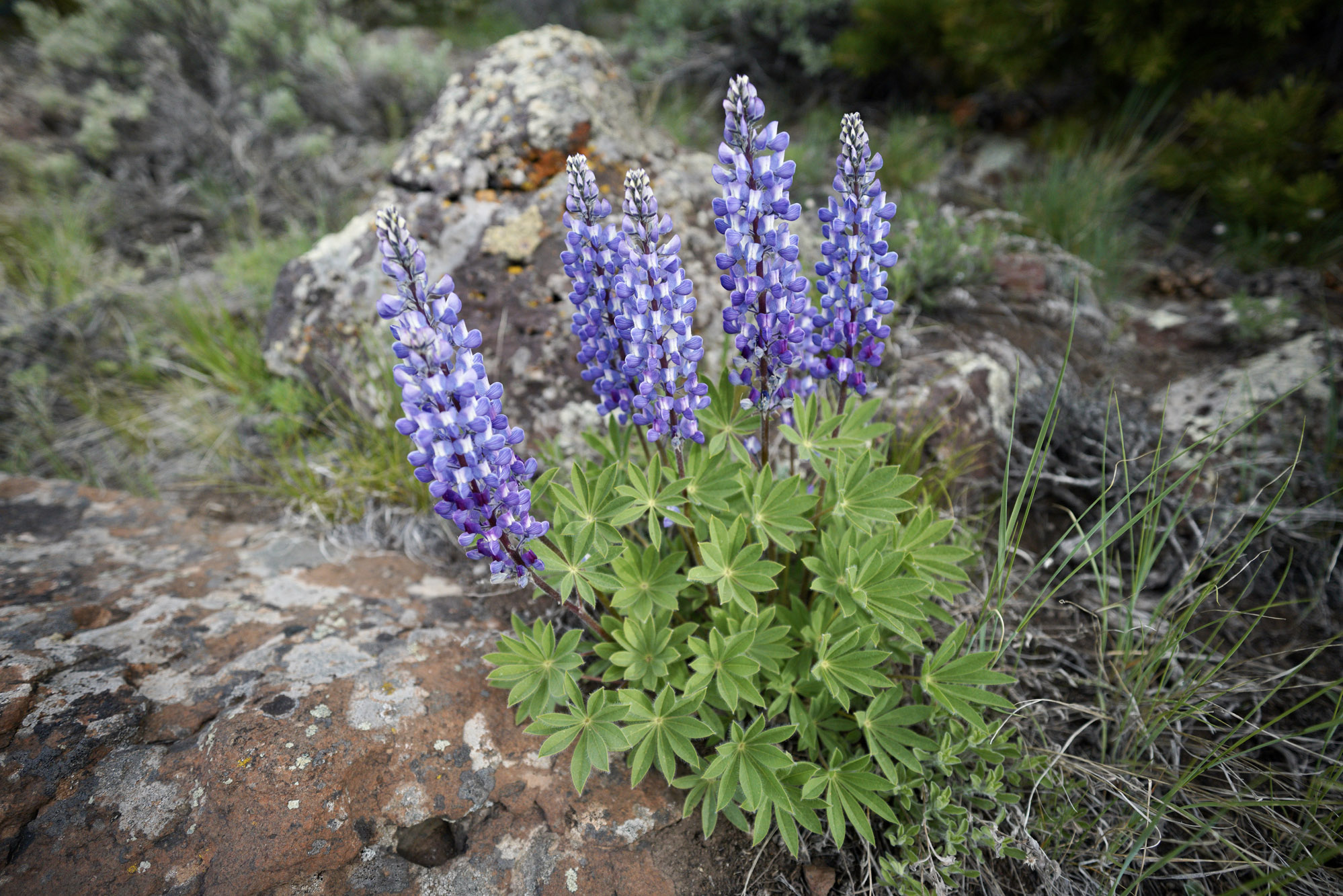

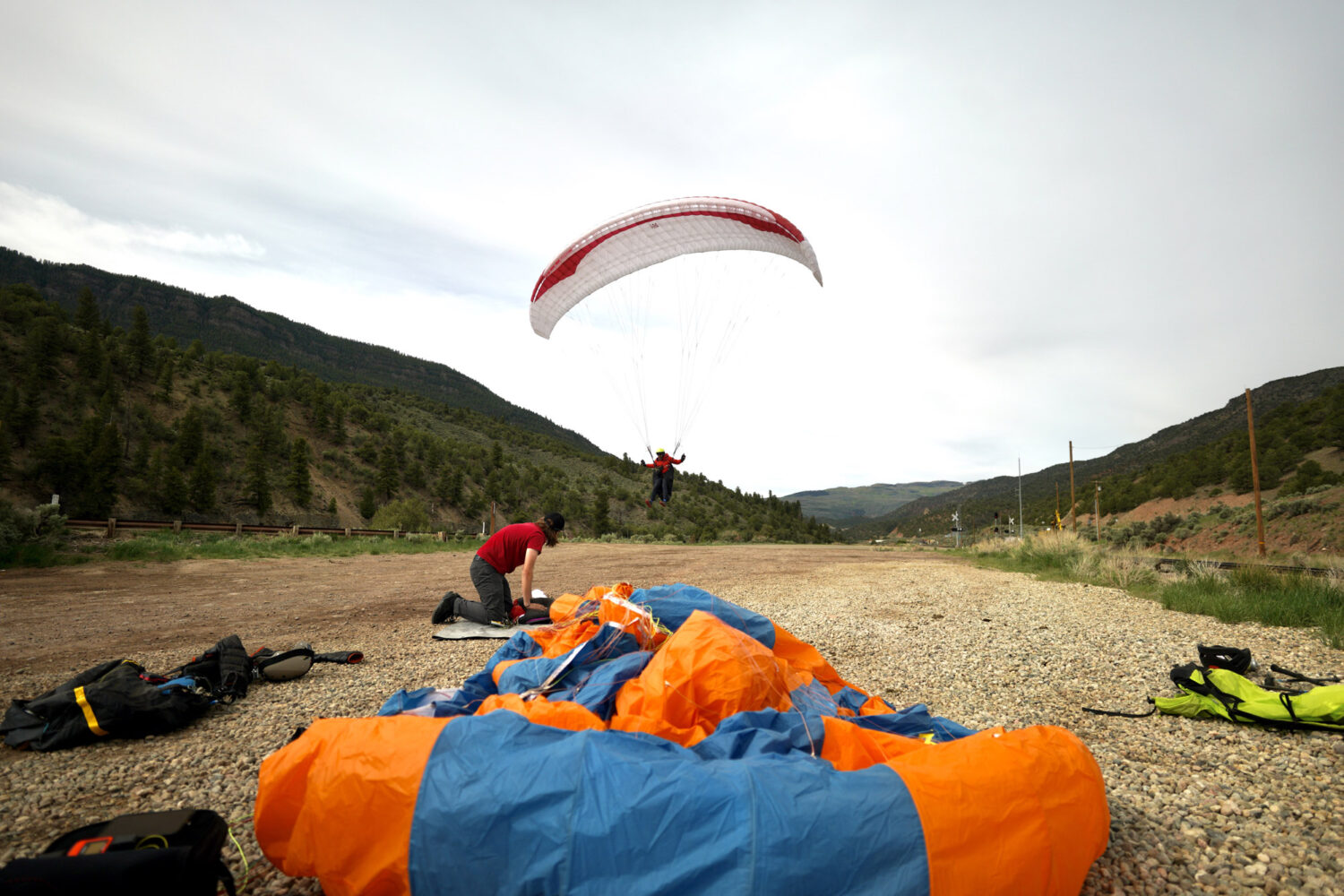
Landing next to the Colorado River.
This section of my route headed south toward Green Mountain Reservoir, where I left the pavement on a short and steep Forest Service road that led to my second campsite which had spectacular views of the Gore Range.

Not every vehicle can get to a campsite like this. Overlooking Colorado’s Gore Range with the Baja.
This was my favorite campsite of the trip and a great test of the Baja’s abilities on a steep two-track. Before encountering any loss of traction on this section of road, I put the truck in four high, mostly out of respect for the trail and those that might come to explore after me.
Without missing a beat, the truck climbed up the trail, clawing over rocks and loose dirt. I was acutely aware that I would not have been able to tow a conventional trailer up to this particular campsite, but for the Baja, this was a piece of cake. This is one of the biggest advantages of a flatbed camper, and I enjoyed the freedom it gave me to explore these lesser-traveled tracks and bring my home with me.

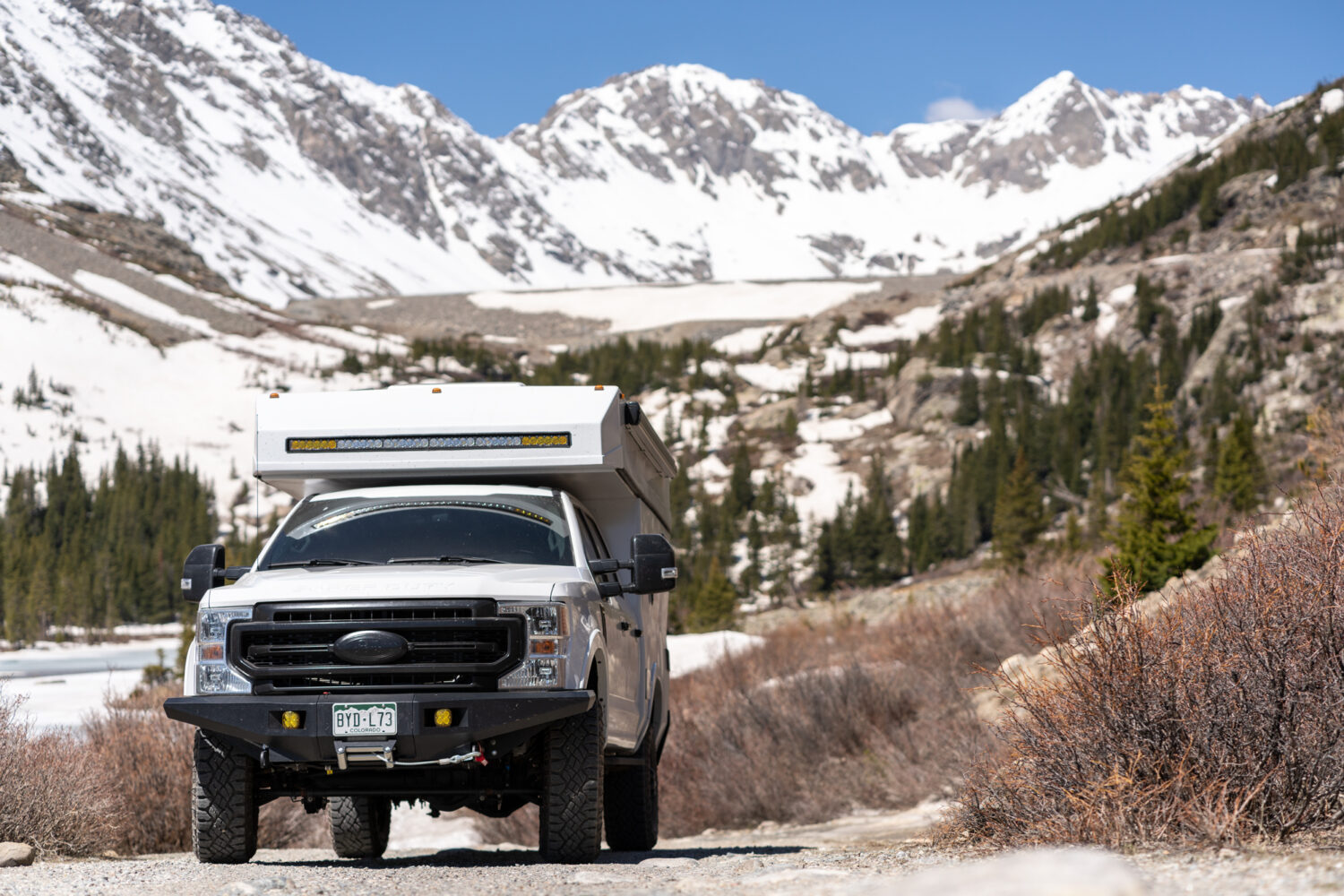
After a restful night, I continued driving through Breckenridge, and Alma, where I turned off the highway for a jaunt up to the Kite Lake trailhead, a popular destination for hiking Lincoln, Cameron, Democrat, and Bross, four 14-thousand-foot peaks that can be summited in a single push. To my surprise, a locked gate with a private property sign said that the area was closed to hiking, including the summits of the peaks.
Resuming my drive, I passed through Fairplay, and once again ventured onto the dirt, this time to see how far I could make it up Georgia Pass. As I ascended the road, a Jeep coming in the opposite direction stopped to compliment the Baja and notify me that snow was blocking the road ahead. Perfect.
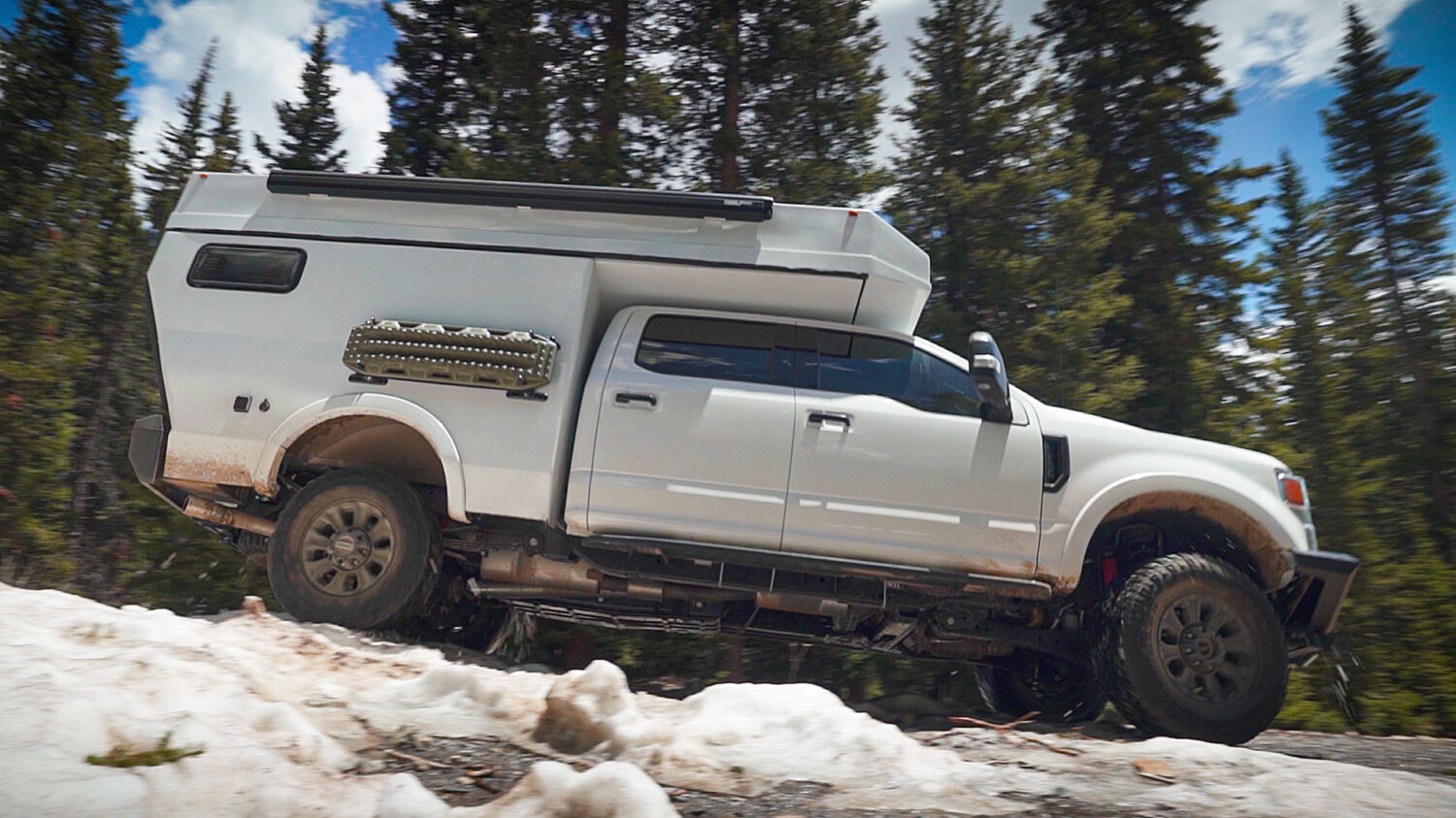
Within a few more turns, I saw tire tracks leading through an old snowdrift, leftovers from the winter months. I was well aware of how easy it is to get high-centered in consolidated snow, but the Baja had a set of MaxTrax, and this first patch of snow was actually quite thin. Because it didn’t appear to pose any major threat, I charged through. I ended up crossing four or five more small snowdrifts before I encountered the actual end of the line. I camped nearby and enjoyed views of the surrounding peaks while icing some beverages, courtesy of Mother Nature.
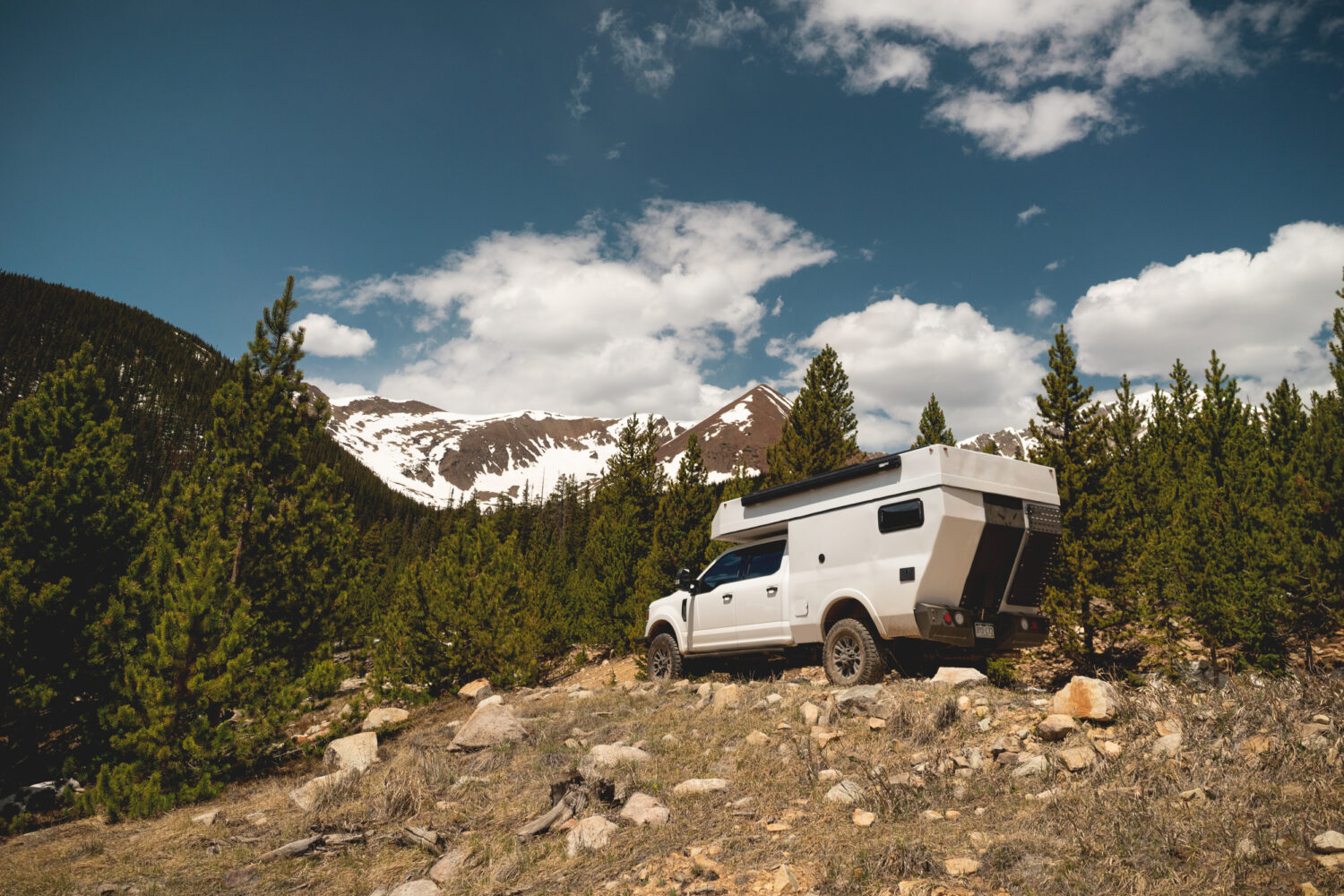


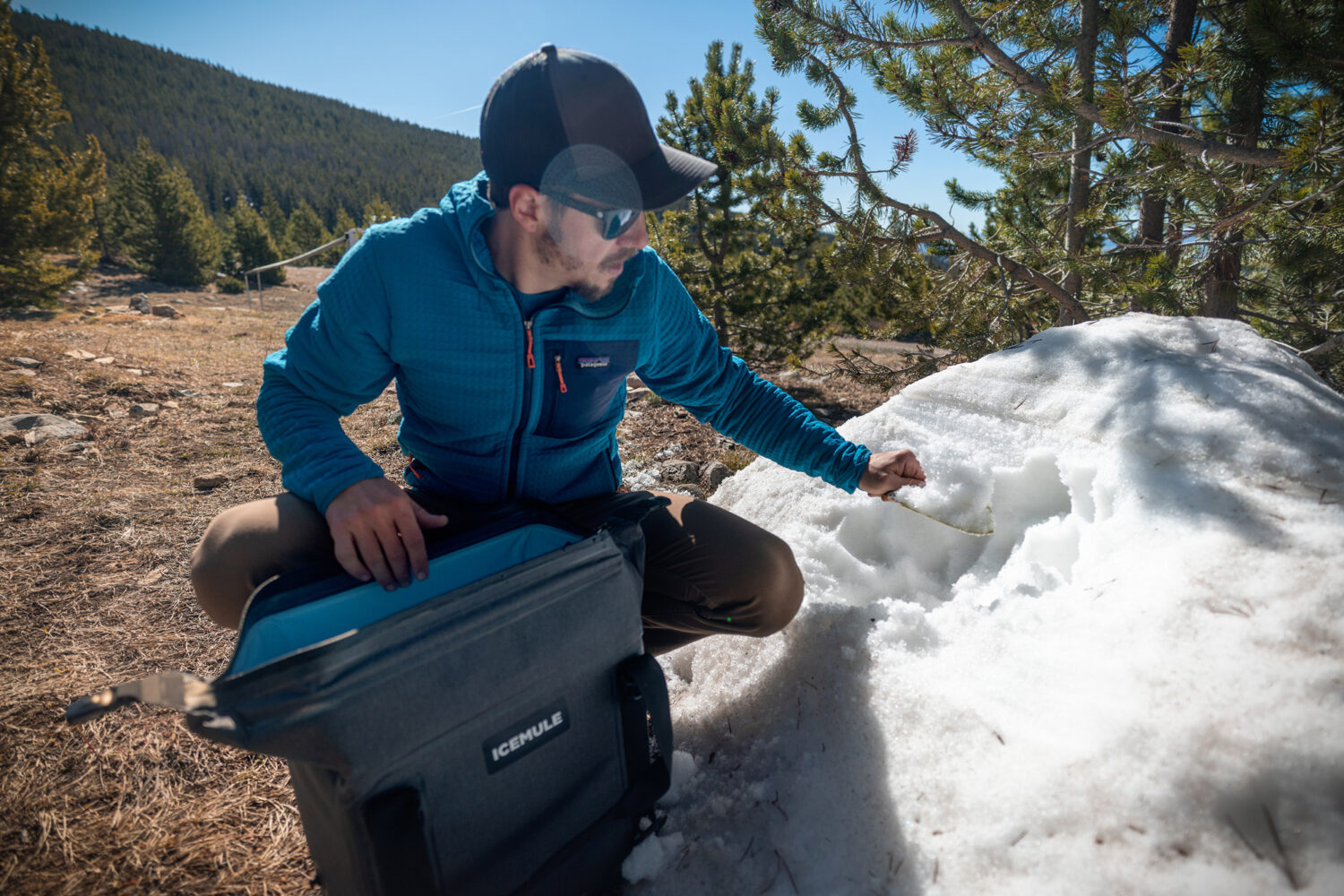
The following day I drove over Guanella Pass (it had just opened that morning) before descending back to Denver and returning the Baja to Rossmönster.
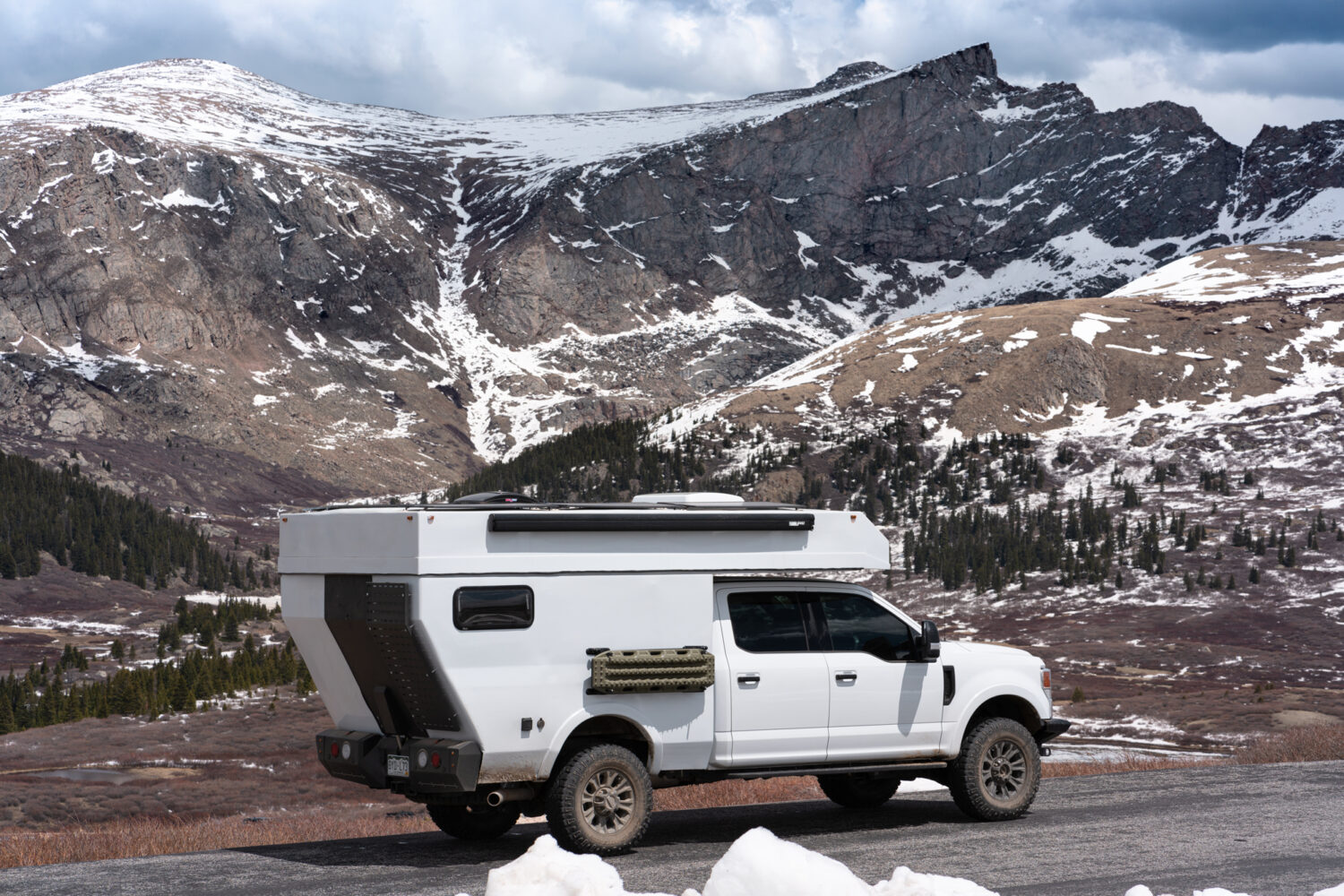
The Baja at the summit of Guanella Pass.
The Rossmönster Baja Adventure Truck: Design and Performance
Driving something new is always exciting, and as I mentioned, this was my first experience driving a flatbed truck camper. Because of this, I was acutely aware of the large size of the Baja. This wasn’t necessarily a detriment; it just took some getting used to.
But by day two of my trip, any concerns I had about the size of the camper had melted away, and instead, I enjoyed the comforts offered by the intelligently designed living space. The interior of the camper is compact, yet it feels roomy. Upon walking up the rear stairs (which open with remote control), you find yourself in the dinette that has a Lagun table and seating that can be converted into additional sleeping space. The seat on the driver’s side houses some of the Baja’s heating and hot water system, while the passenger side seating has storage space.
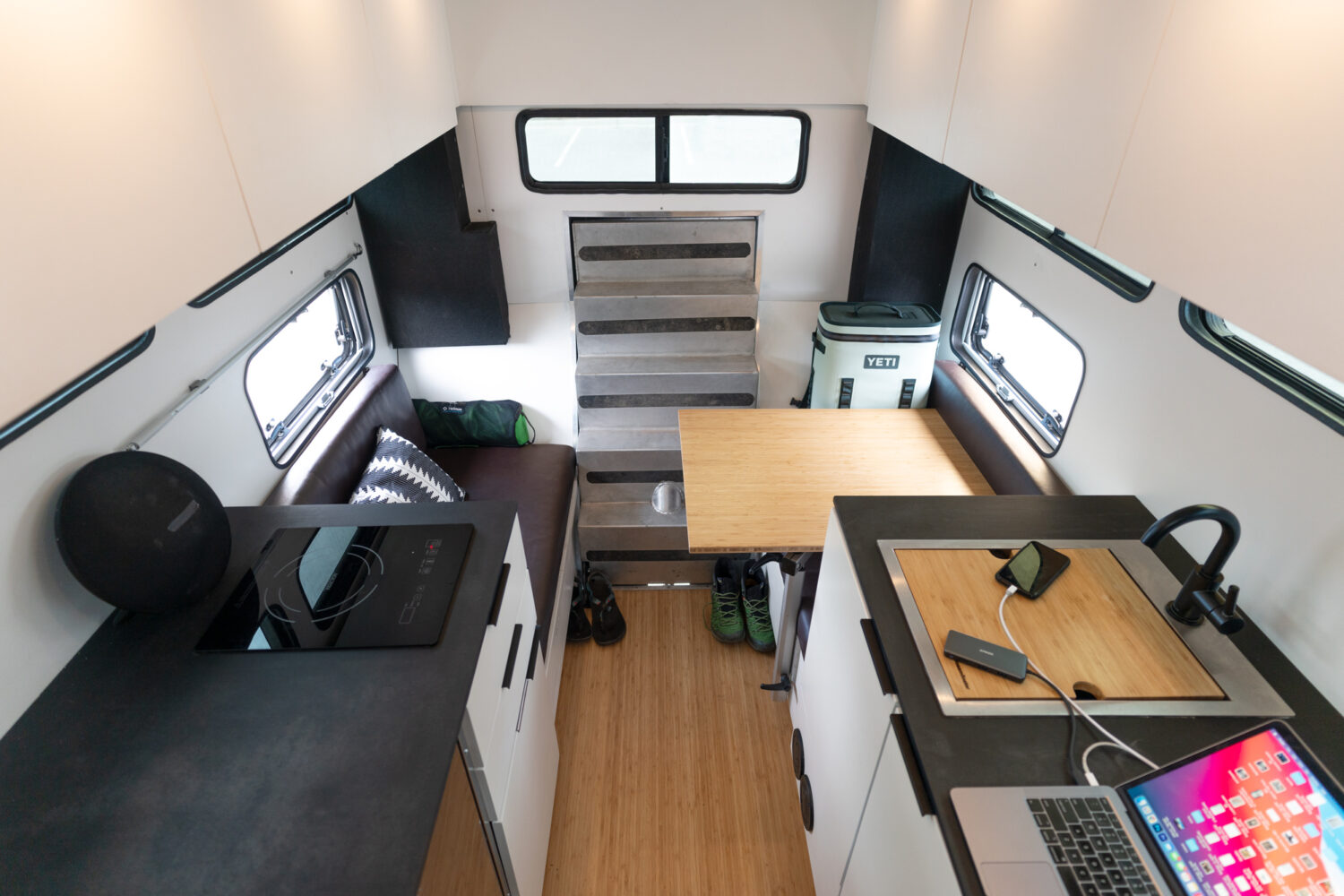

The center aisle of the Baja features a split kitchenette, with an induction cooktop and refrigerator on one side and a Ruvati sink opposite. Storage compartments line both sides of the camper along the ceiling, which means no bending or stooping when you need to grab provisions or equipment. Additional storage compartments that double as stairs provide access to the vehicle’s bed.
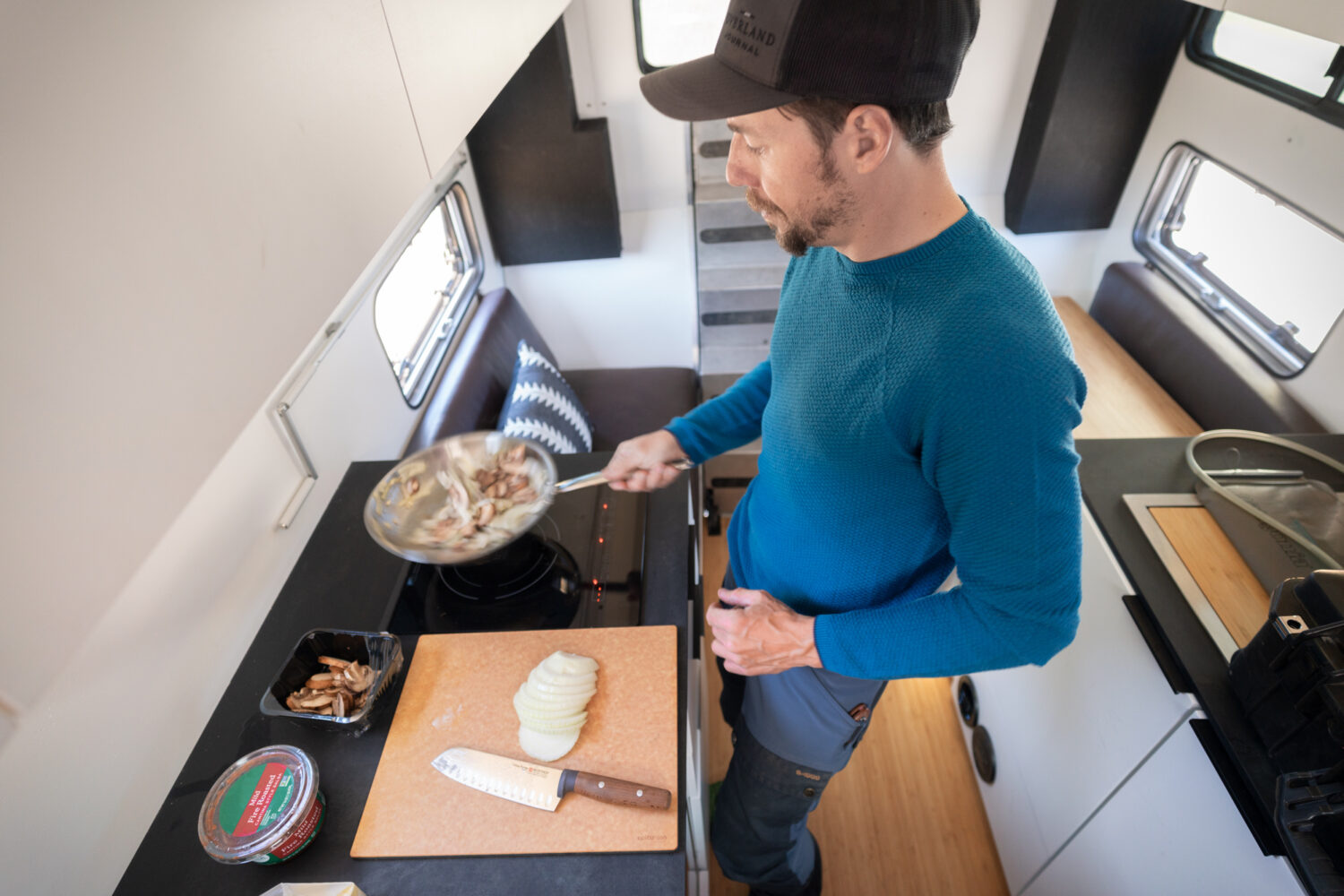
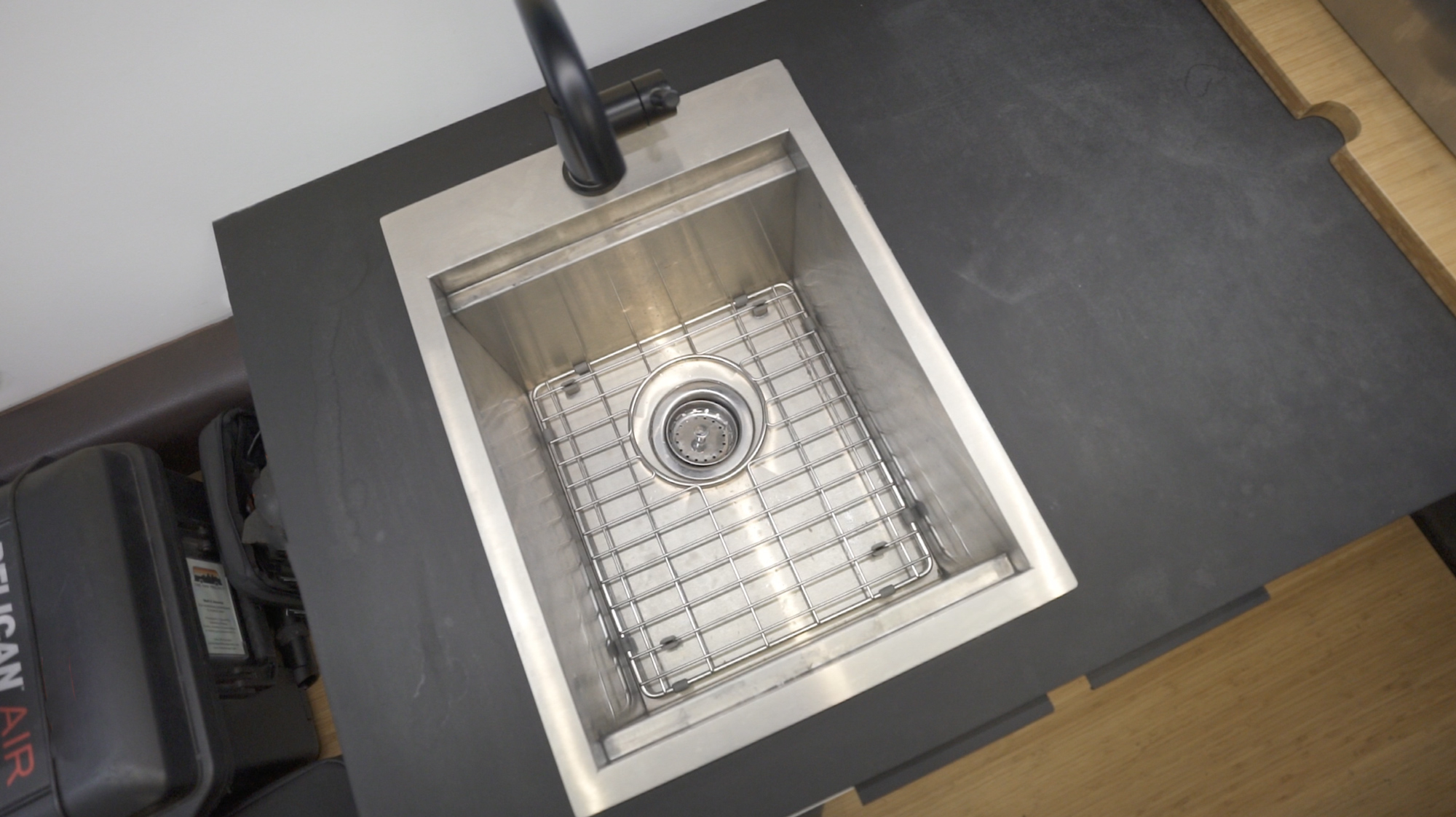



“Innovation and pushing the boundaries of what is possible get Ross and me really excited. Launching the Overland series of campers has been incredibly rewarding because while we are used to pushing the boundaries of design and craftsmanship, this project forced us to push the limits of testing. In order to work out the kinks and confidently bring this new concept to market, our whole team was involved in rigorous testing that proved these truck campers can go as far as you are willing to push them.” –Luke Farny, owner of Rossmönster Vans
The bed is a very comfortable Tochta queen-sized mattress, and there are windows in the sleeping area that provide views of the surroundings. There is also a large roof hatch/skylight above the bed to let in lots of sunshine; it doubles as an emergency escape route from the vehicle. In future updates to the Baja platform, I’d love to see additional headroom in the sleeping area so that occupants can fully sit up in the bed.

The pass-through from the camper to the cab of the truck was small yet functional. It utilizes heavy fabric on either side of the opening to help isolate driving sounds and to provide some insulation when using the heat in the camper. Because of its small size, I only used the pass-through as a way to start the truck on cold mornings without having to go outside. The rest of the time, I opted to walk around the camper if I needed to access the cab of the truck.
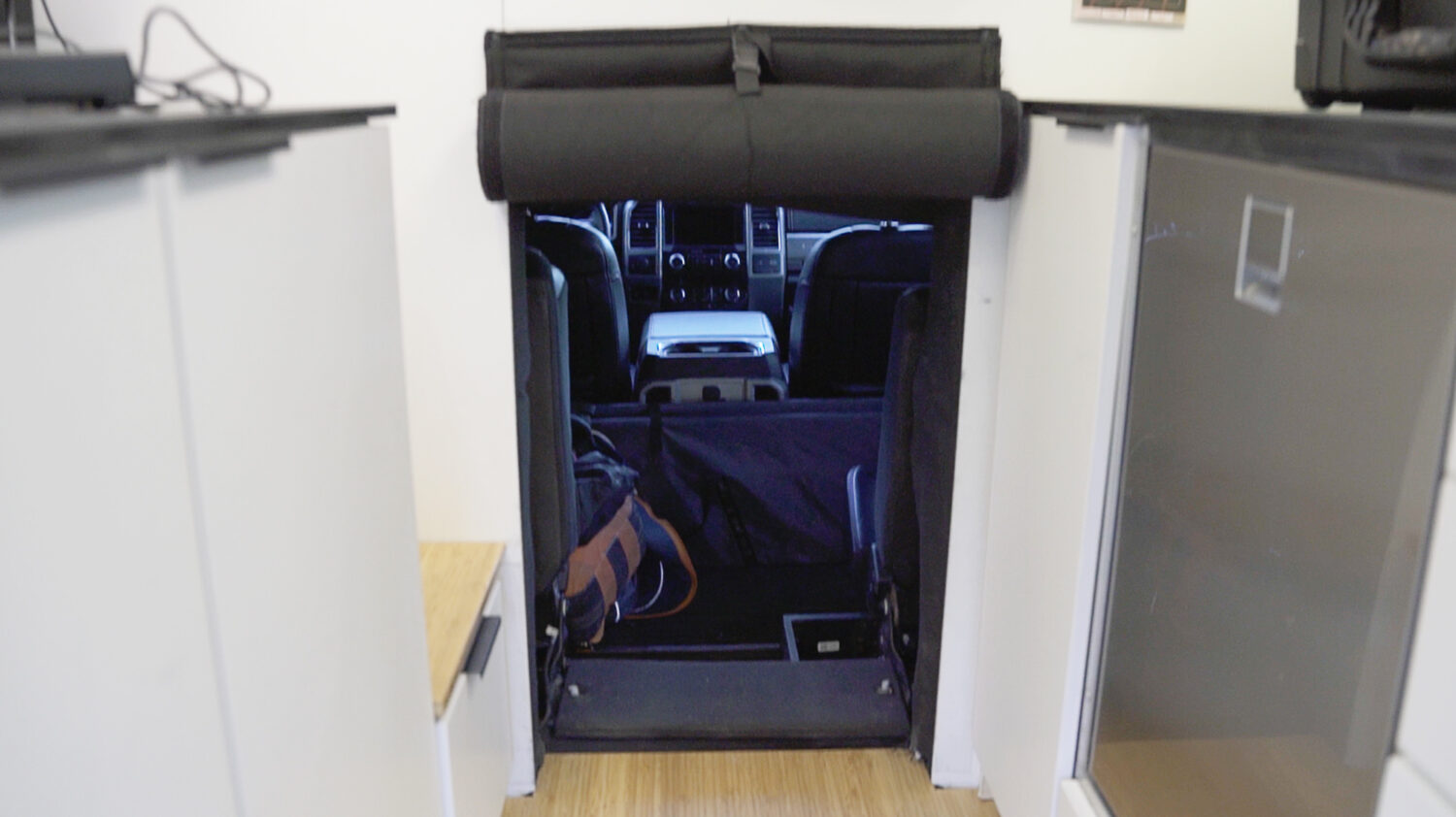
The Baja that I took out on the road was one of two prototype trucks that Rossmönster built and tested on a trip in—get ready for this—Baja, California. The camper shell was made in-house out of carbon fiber. Ross informed me that future Baja builds, be they rentals or commissioned, will be outfitted with camper shells made by an outside vendor who specializes in composite forms. This will provide a higher level of quality control and consistency in the final product.
When built on the Ford F-250 Tremor platform (there are multiple chassis options if you are purchasing a Baja), the truck has a total dry weight of 9,100 pounds, is 22 feet long, 82 inches wide at the bumpers, and offers a 39-degree angle of approach and 24-degree angle of departure.
Camper Systems
The Baja has a variety of systems to keep things comfortable and functional on the road. These include a Rixsen’s Inc hydronic heat and hot water system, a 30-gallon freshwater tank, 400 watts of roof-mounted Zamp solar panels, a 400 amp-hour lithium battery bank, a 120-volt alternator charger, a 3,000-watt AC inverter, and a Bluetooth battery monitor.
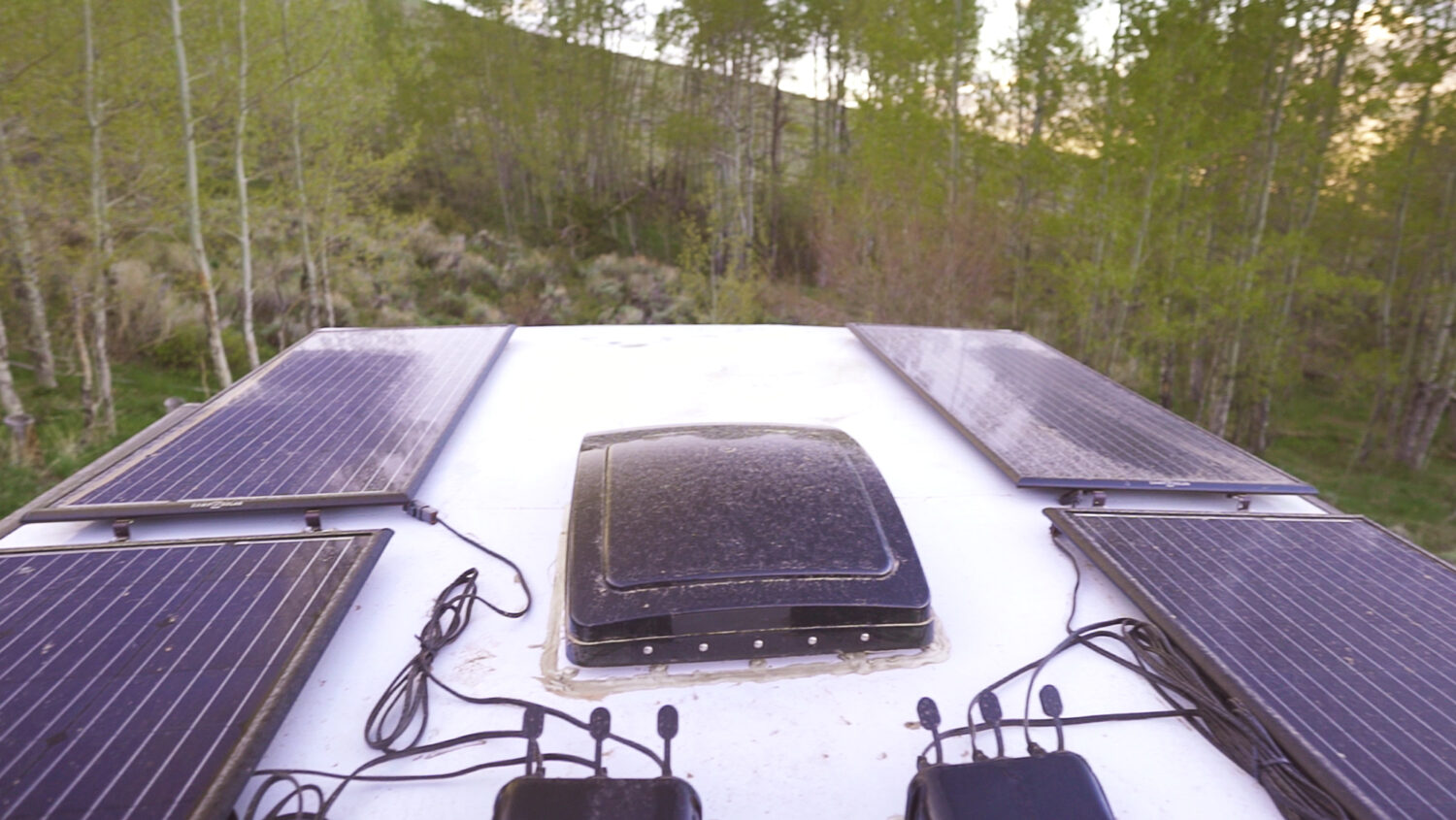
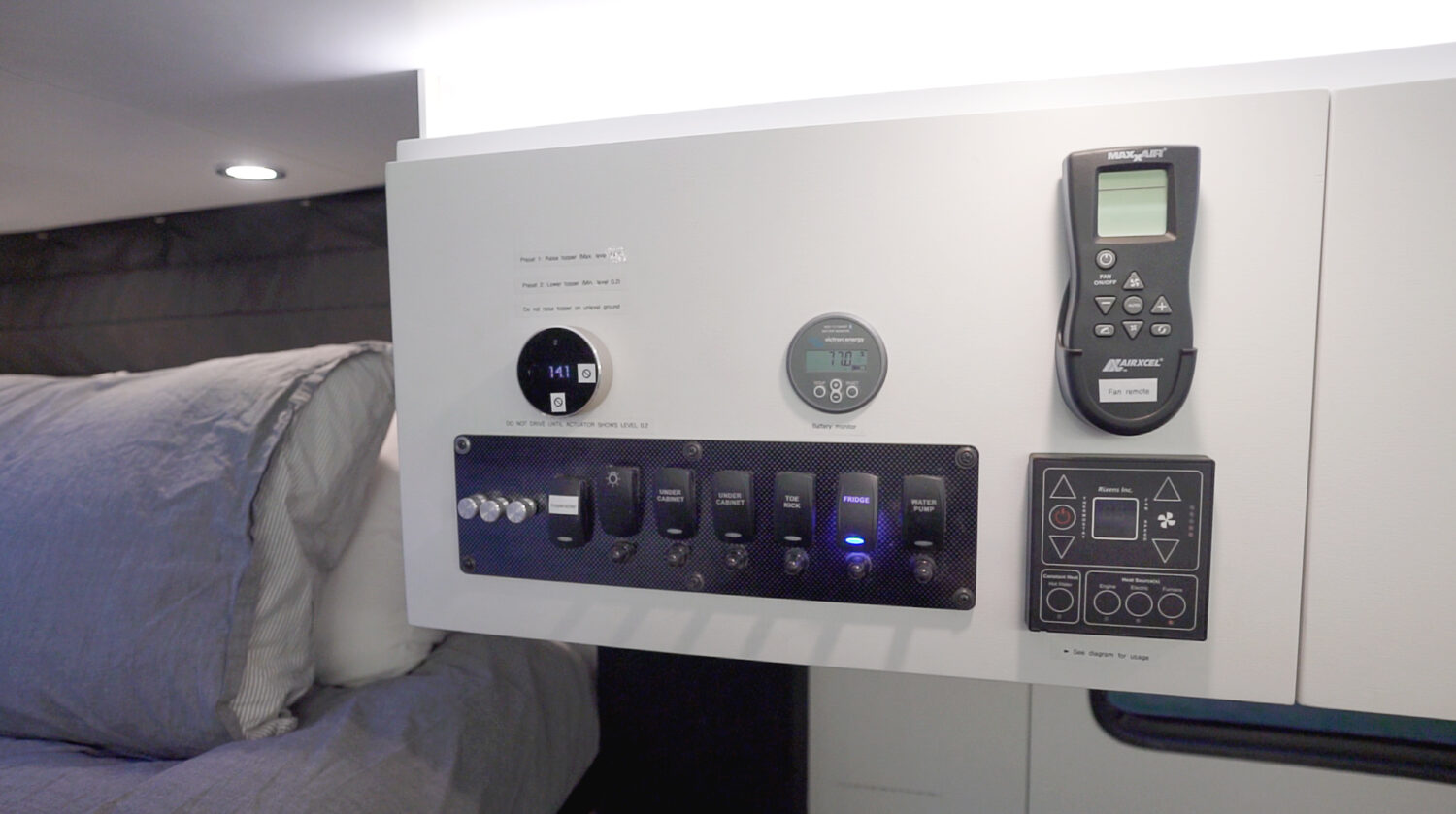
The solar electrical system powers a single-burner induction cooktop, dimmable interior LED camper lighting, Cruise 85 Isotherm refrigerator/freezer, 12-volt water pump, Maxxair vent fan, and electric roof actuators.
Off-highway Equipment
Because the Baja was created to go where other campers can’t, it can be outfitted with a variety of off-road specific equipment, including but not limited to:
- Custom high-clearance bumpers with integrated storage compartments
- Warn winch
- Proprietary MaxTrax mount/table
- Integrated Baja Designs light bar and fog lights
- Rear-mounted Molle panel

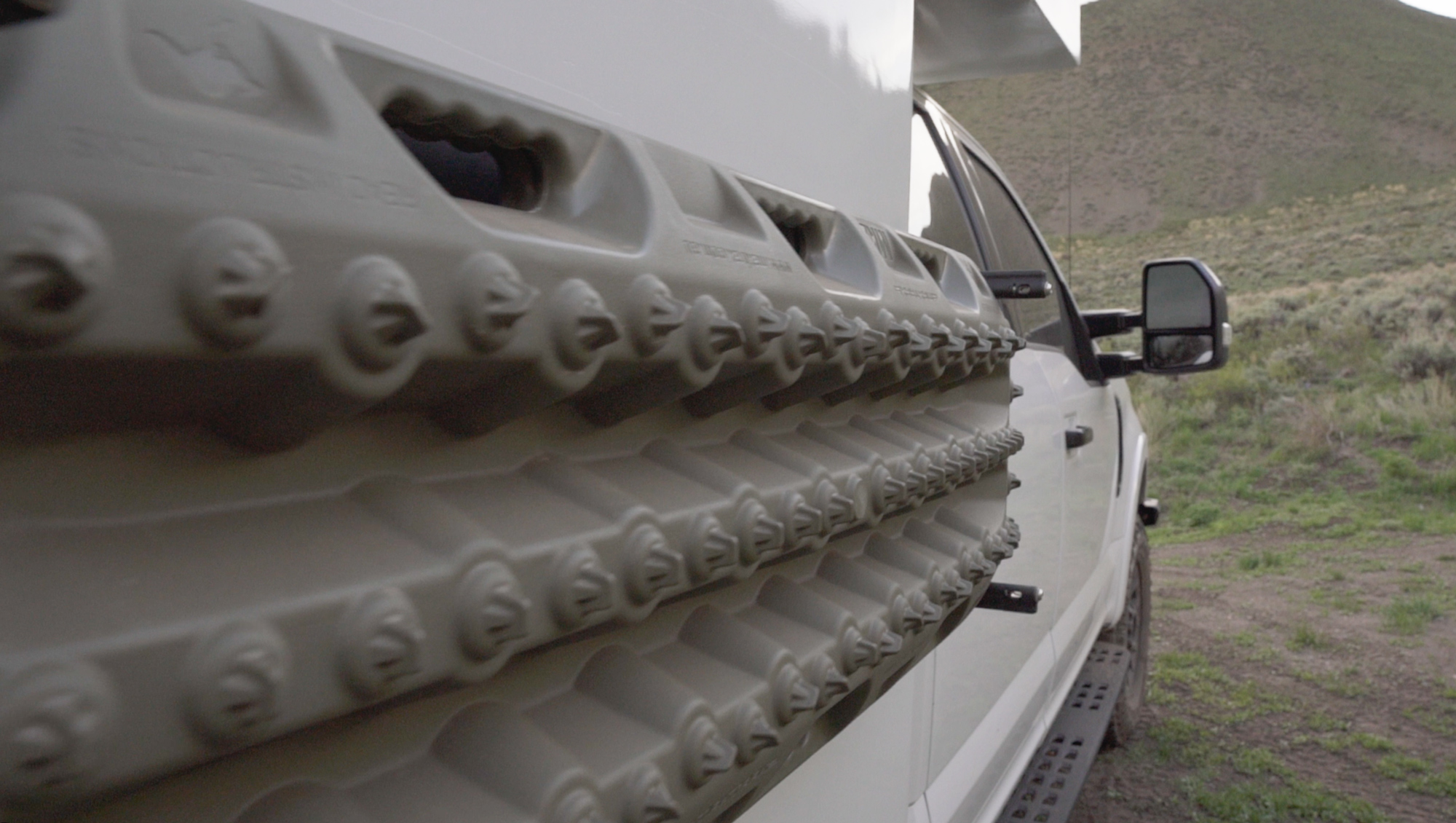
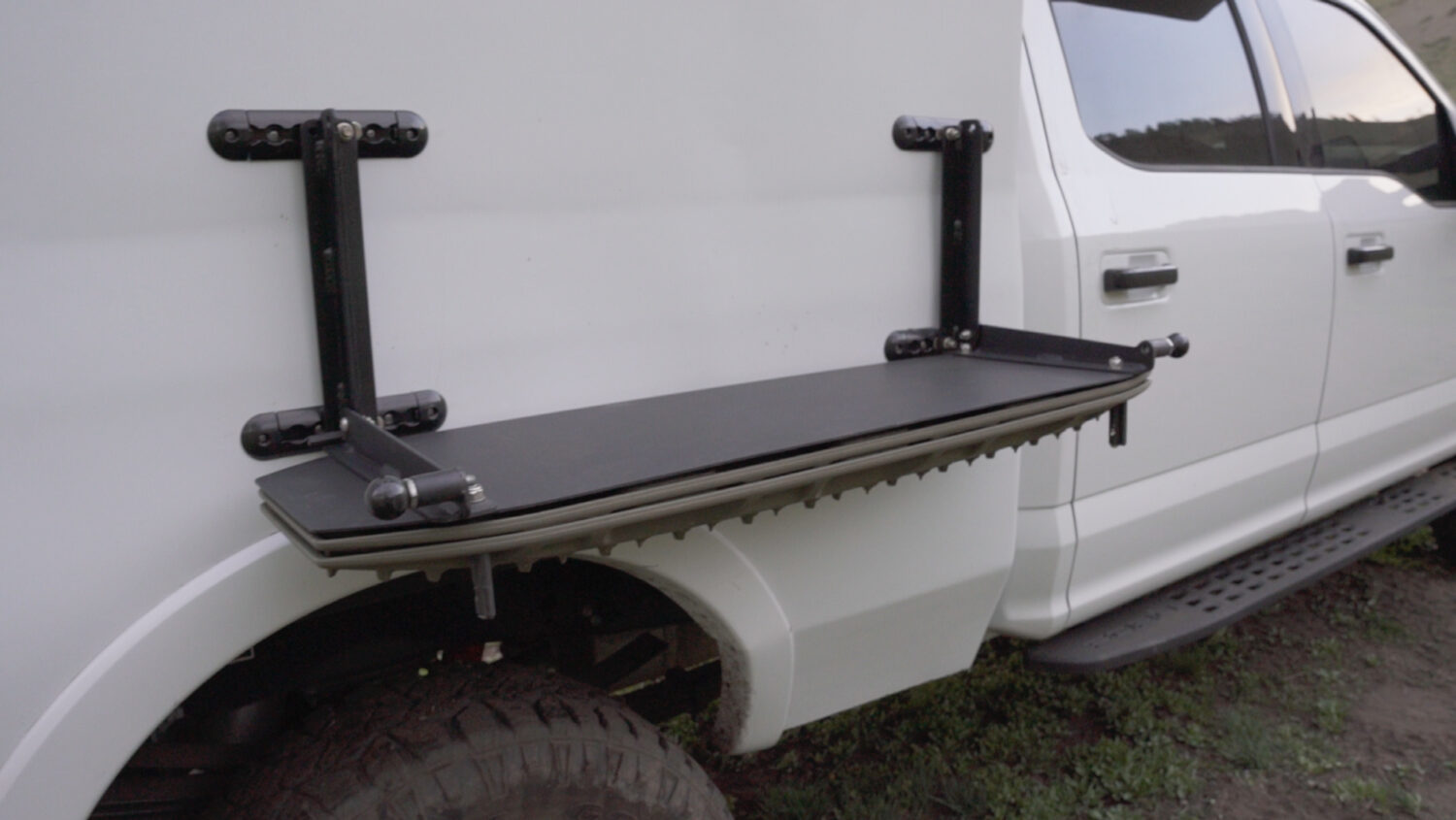

Final Thoughts on the Rossmönster Baja
My time with the Baja was wonderful, and for the purposes of my particular trip, it performed perfectly.
The vehicle that I tested had a gasoline engine, a choice that the Rossmönster crew made based on their desire to take it to Baja California, where low-sulfur diesel can be hard to come by. For the duration of my trip, which covered just over 400 miles, I averaged around 11 mpg. Given the capabilities and comfort of the Baja, this fuel economy felt reasonable, but I’d be interested to see what kind of mileage the diesel version gets.
While all of the truck systems worked well in the field, I did have one electrical outlet go bad during my test, but I don’t fault Rossmönster. The reality is that electrical components have a finite lifespan. However, the experience was also a great reminder of the importance of redundancy in expedition vehicle systems. Luckily, I had an Ecoflow Delta battery that I was able to use to power the roof actuators and induction cooktop on the final day of my trip, both of which relied on the outlet that failed.
Would I take the Baja out on another adventure? Absolutely. Between its capability, comfort, and good looks, I think that this adventure truck will please most vehicle-based travelers, whether your objective is a short weekend trip or a month-long journey to Cabo San Lucas.
Learn more about the Baja adventure truck on Rossmönster’s website.
Our No Compromise Clause: We carefully screen all contributors to make sure they are independent and impartial. We never have and never will accept advertorial, and we do not allow advertising to influence our product or destination reviews.


